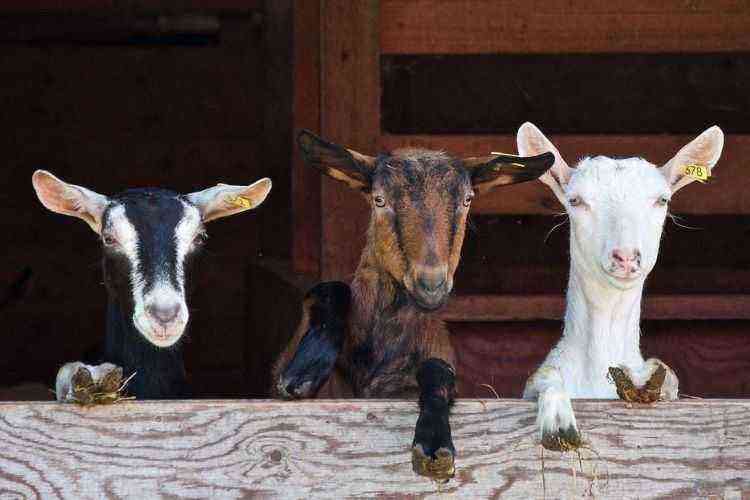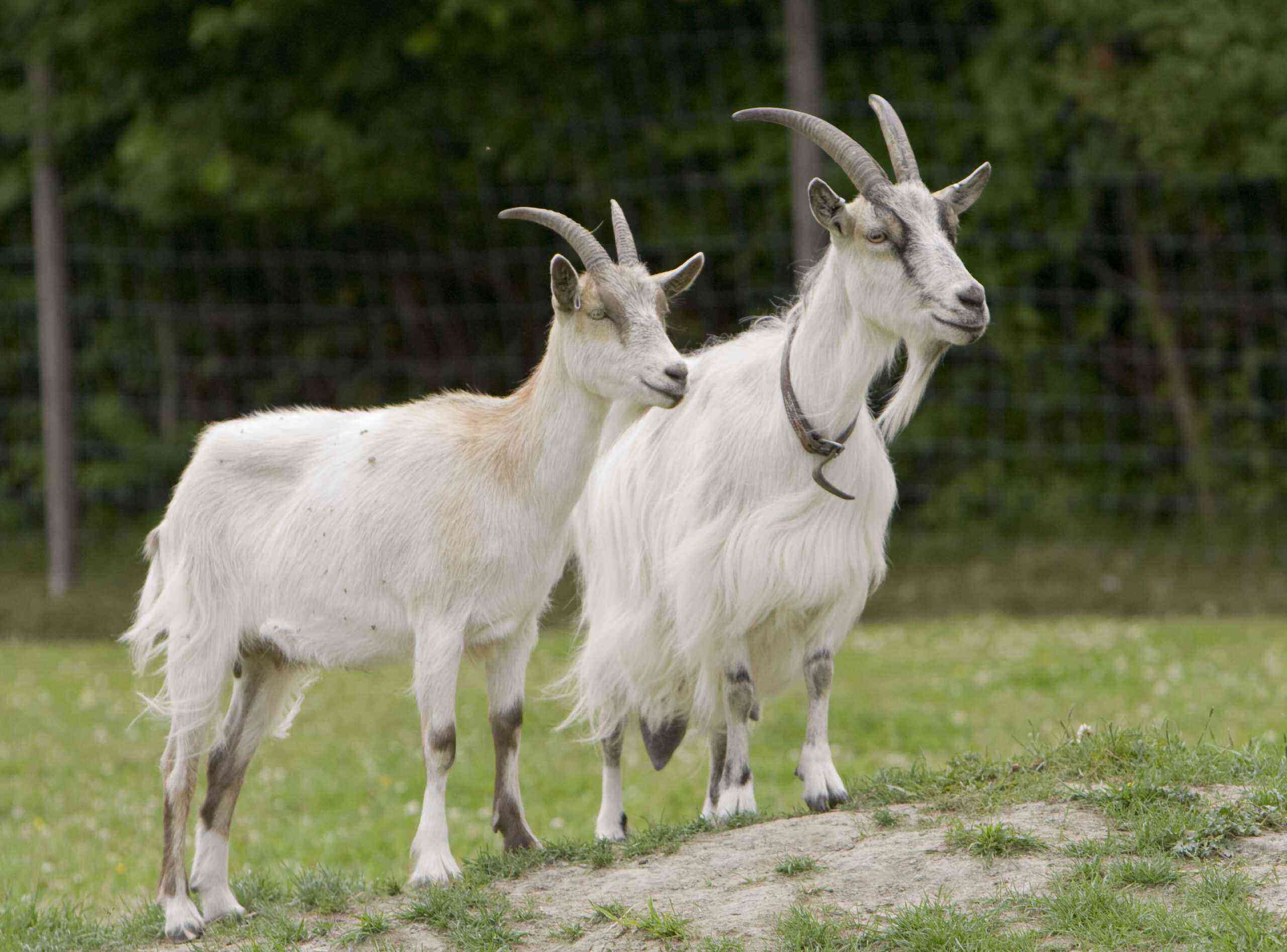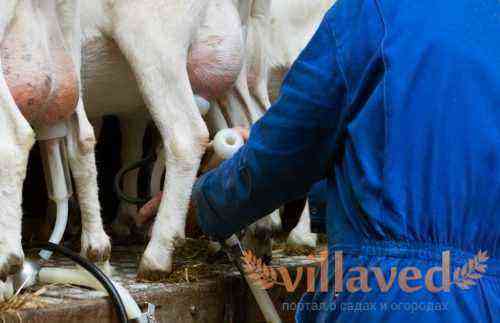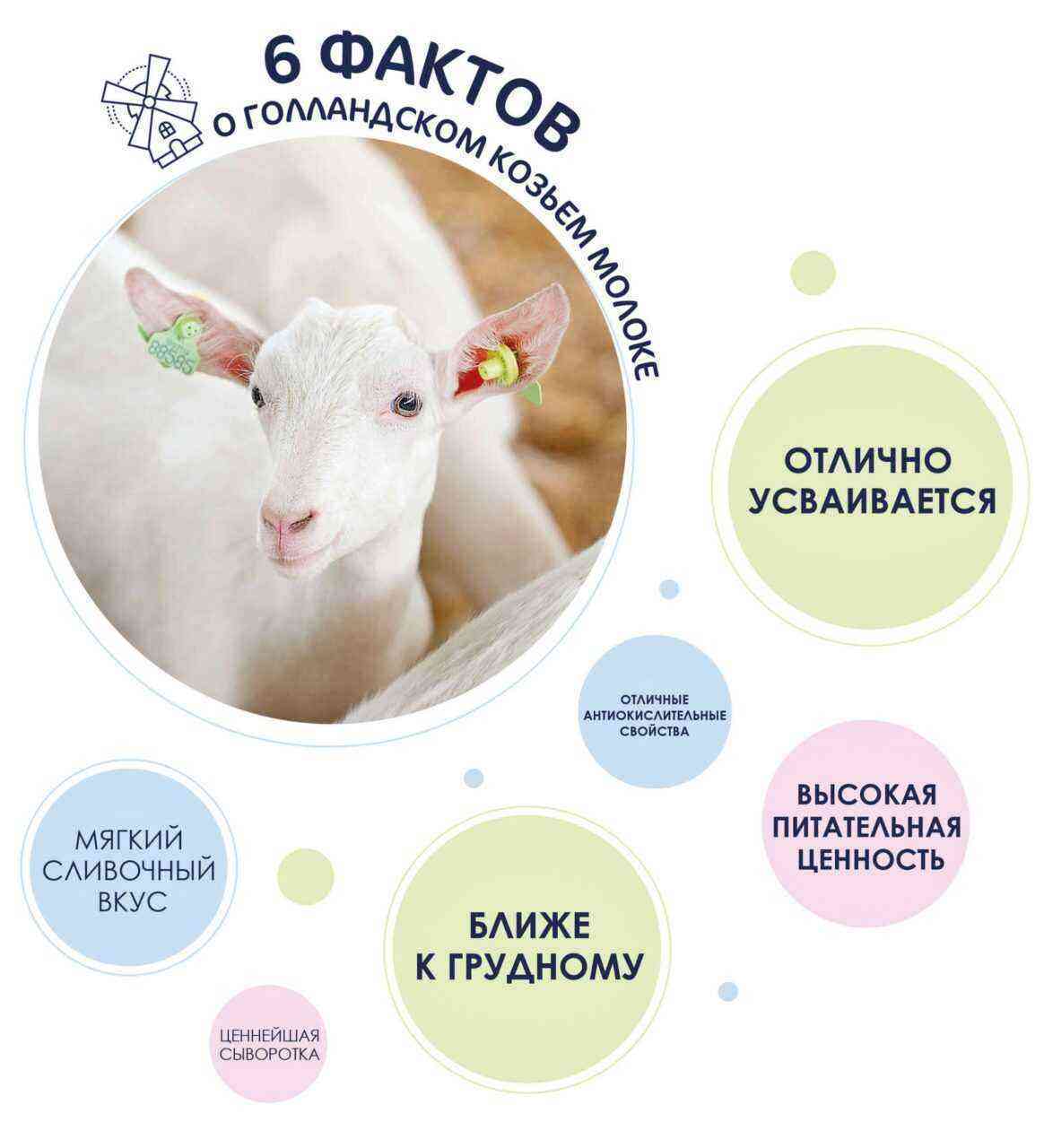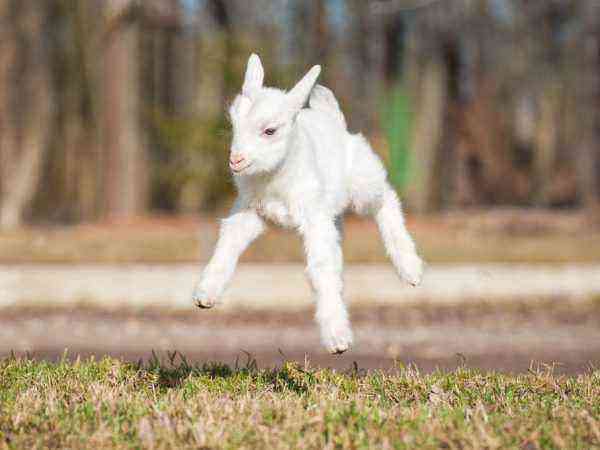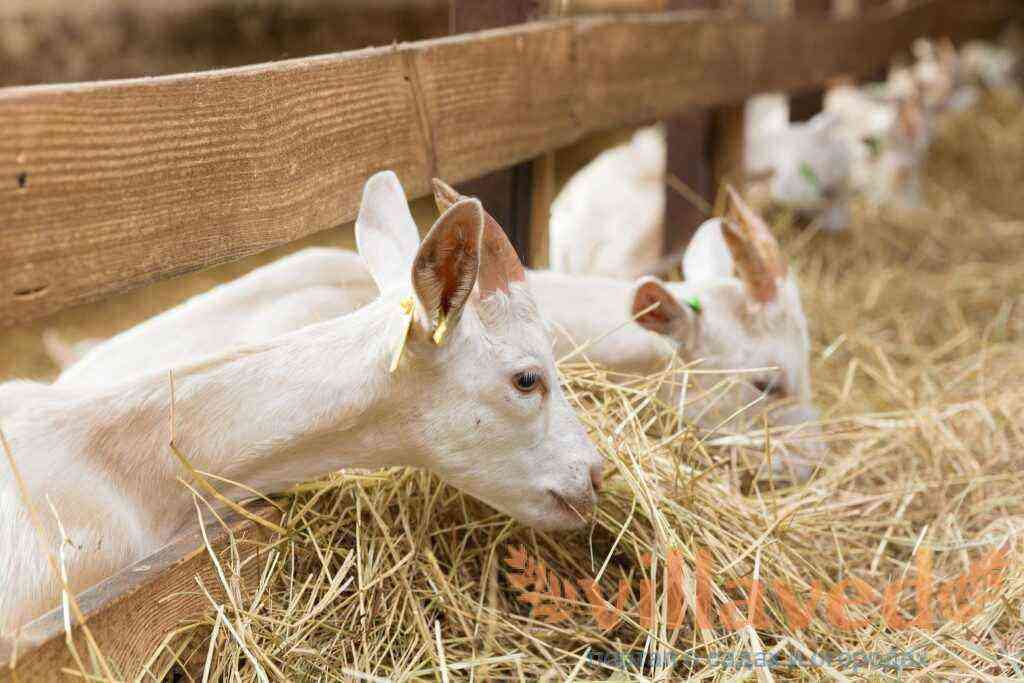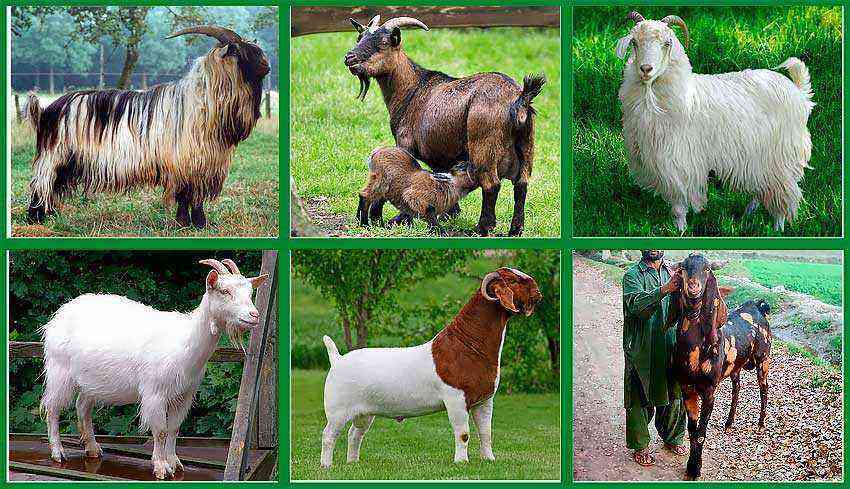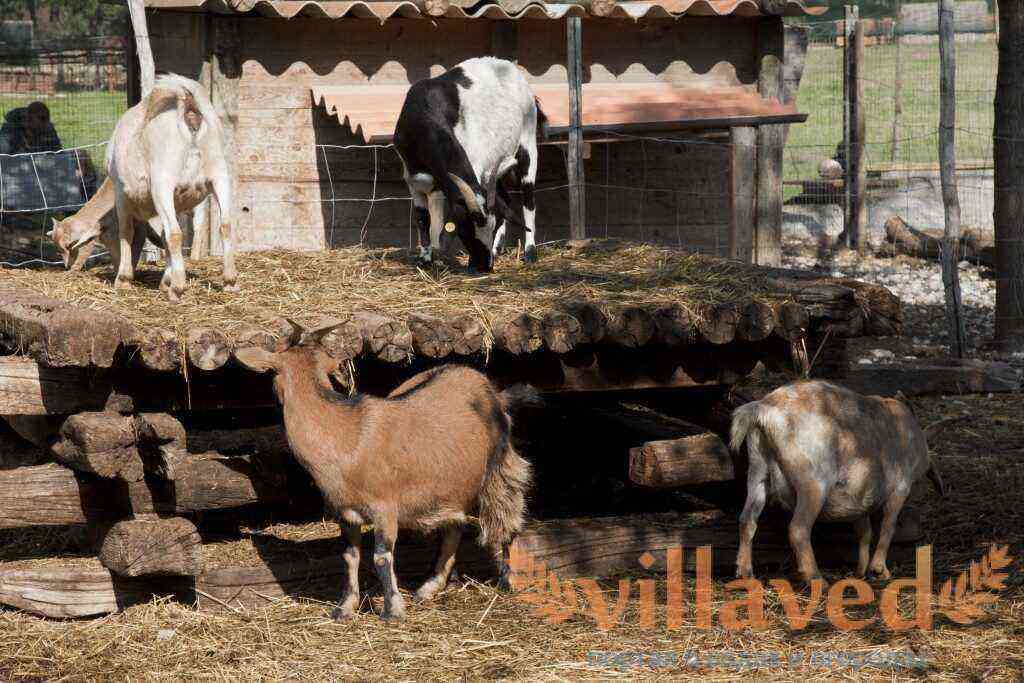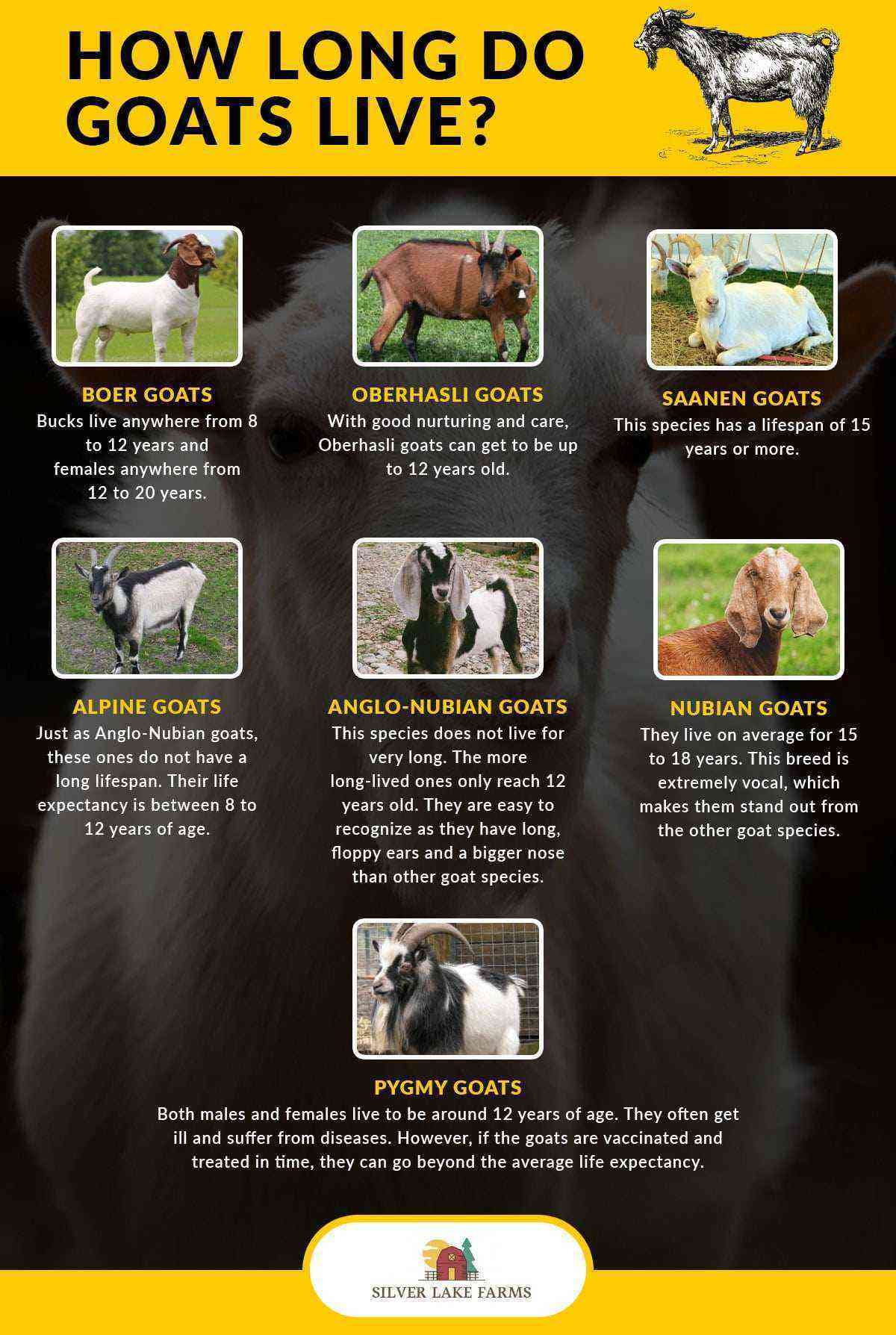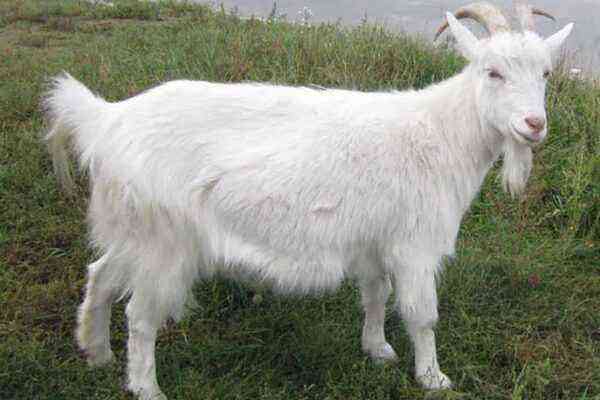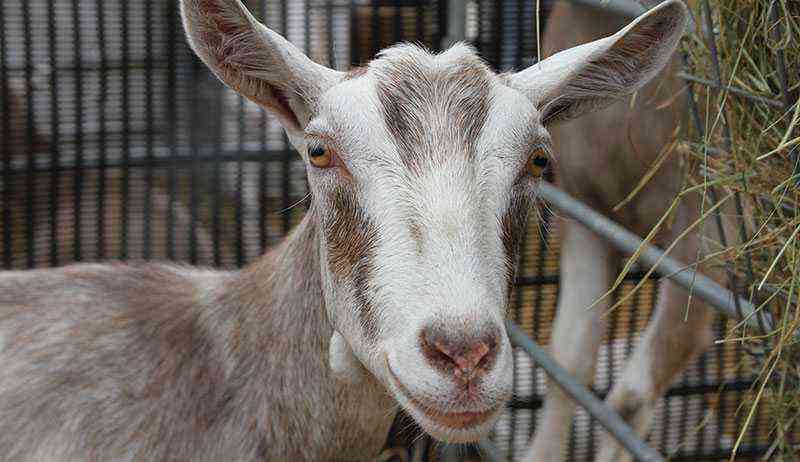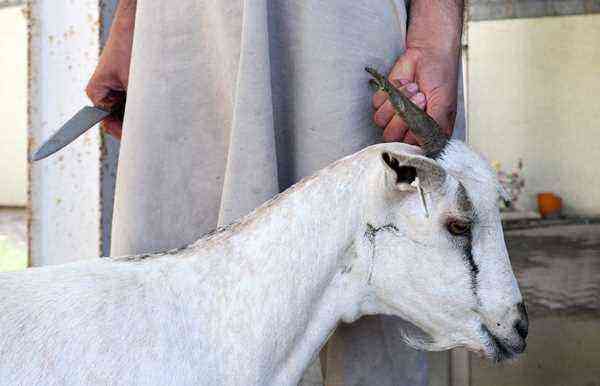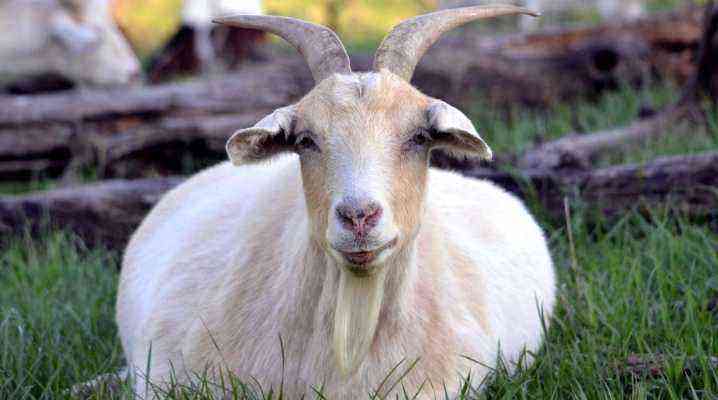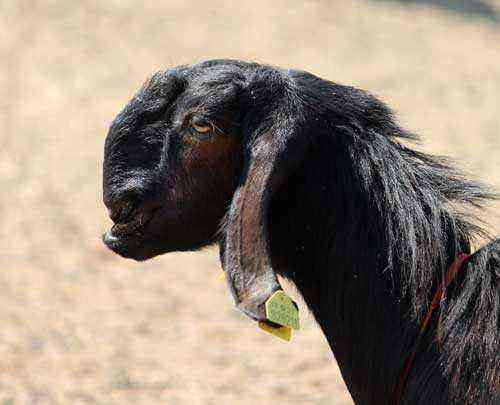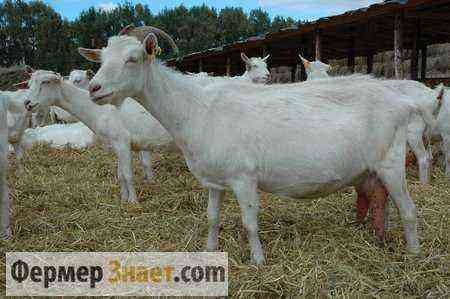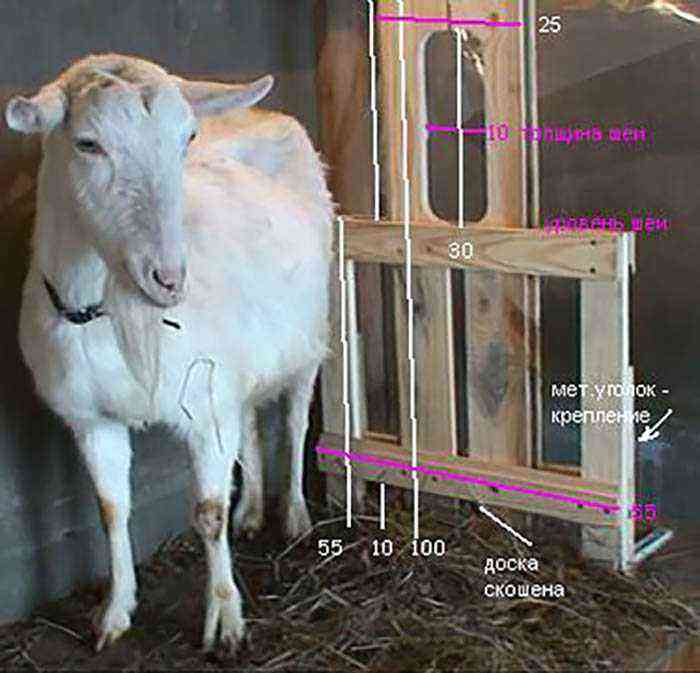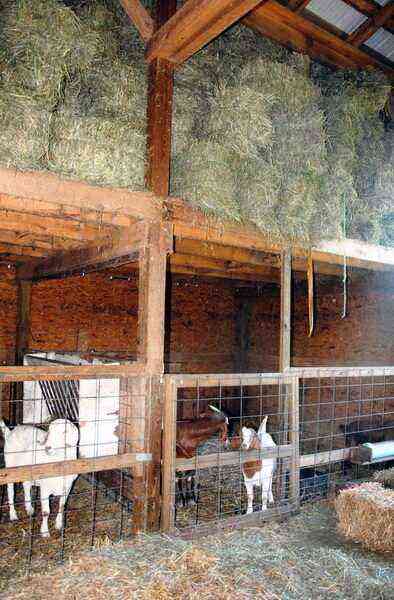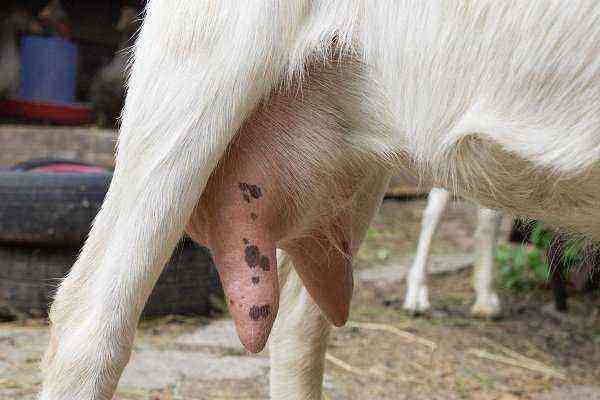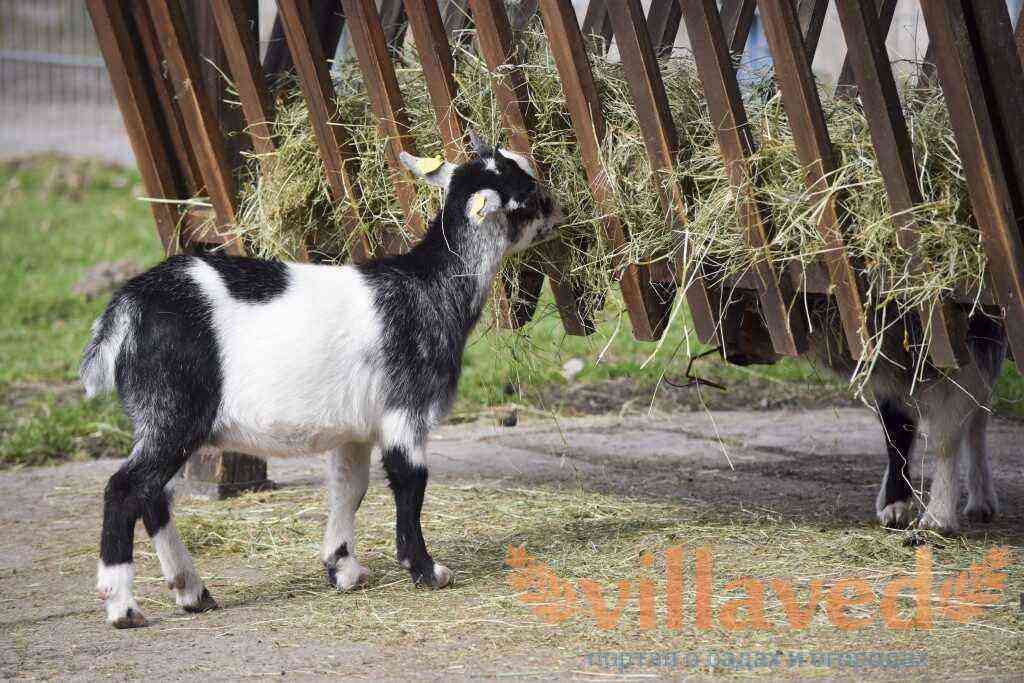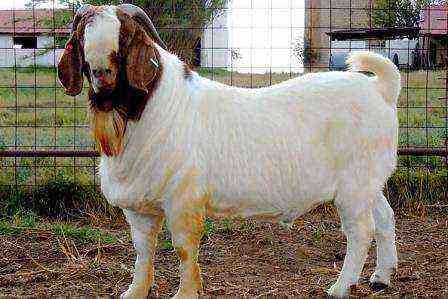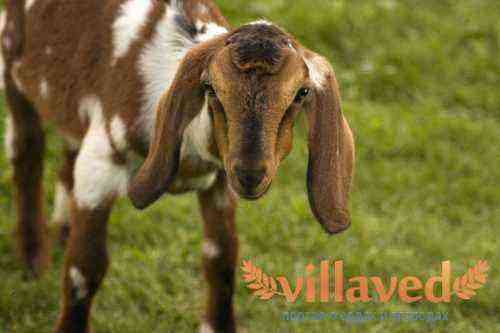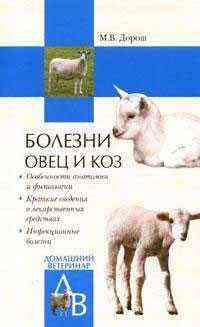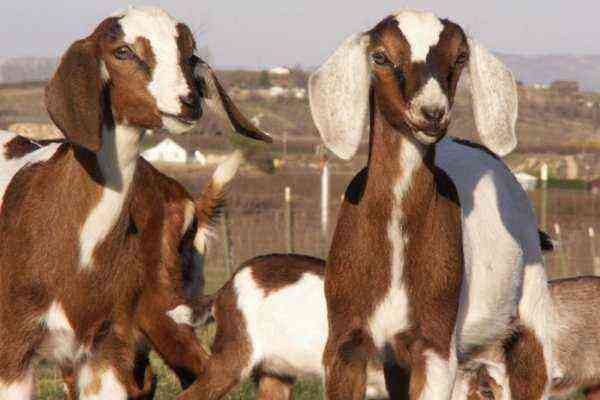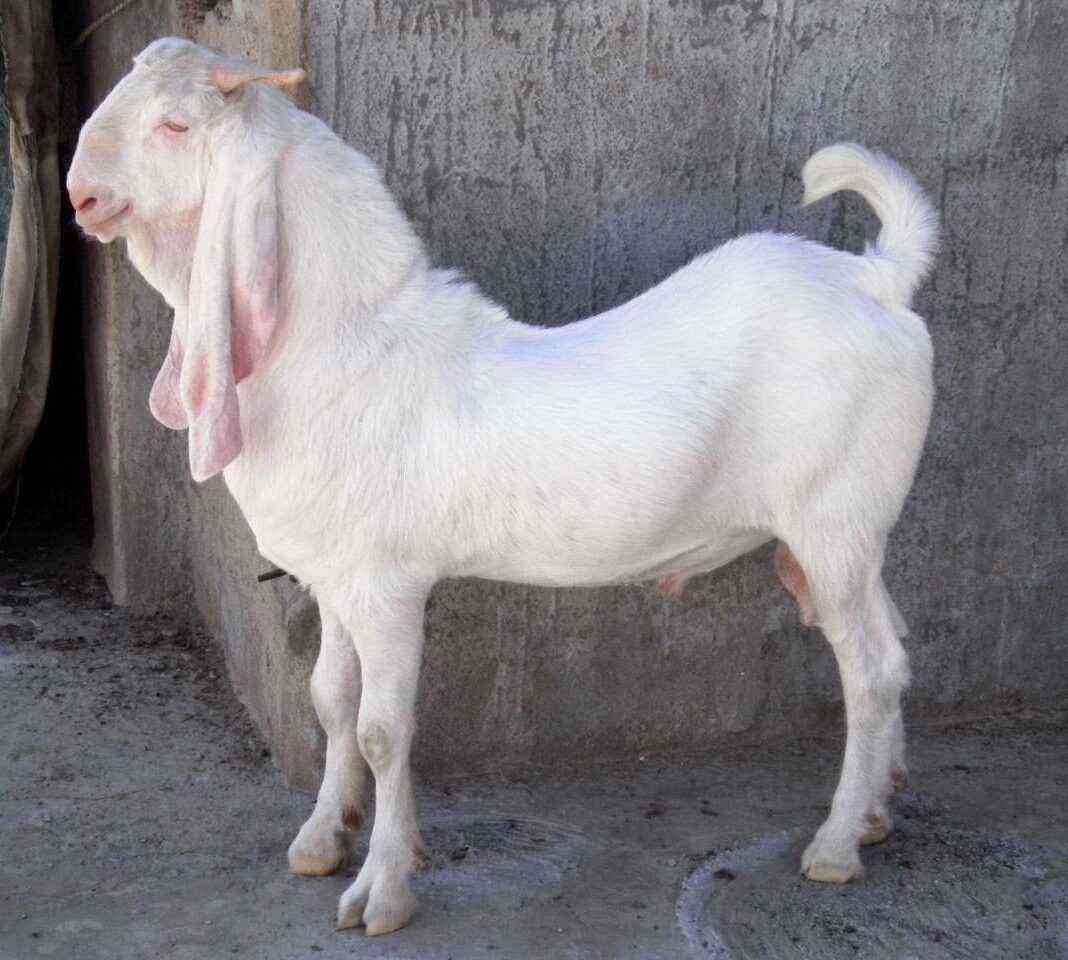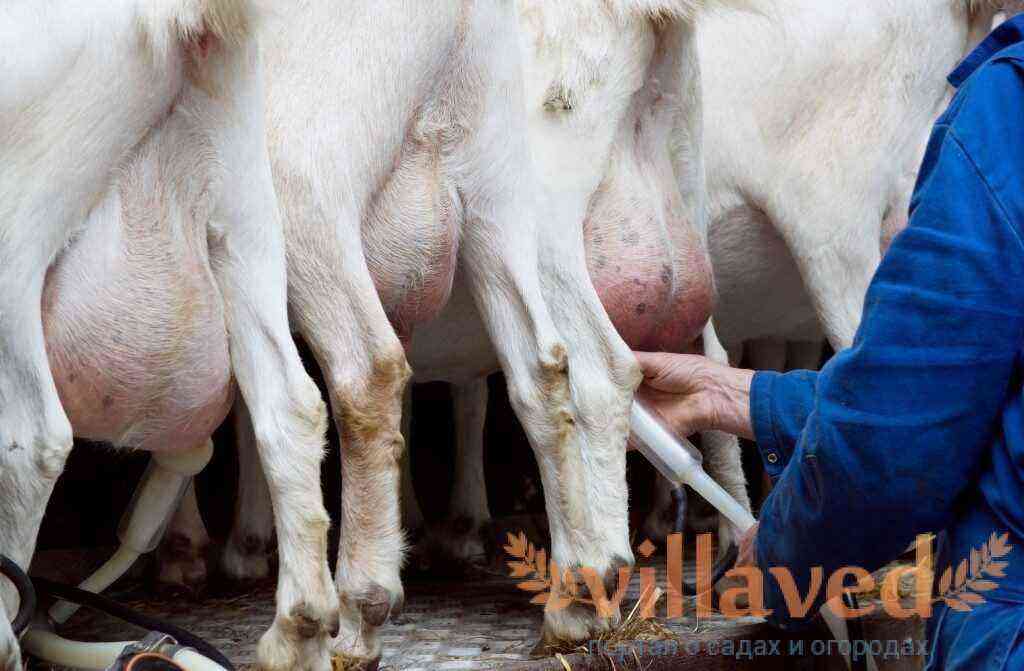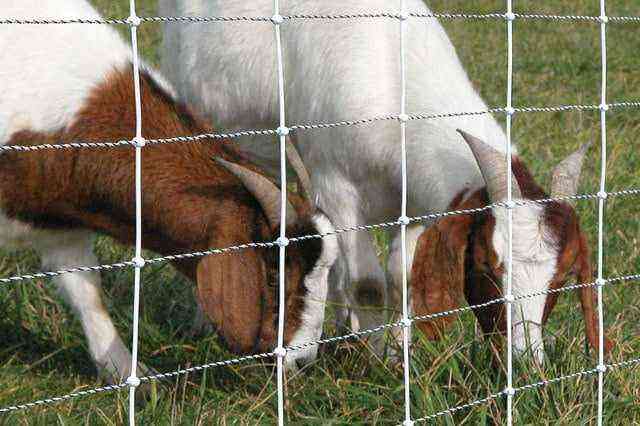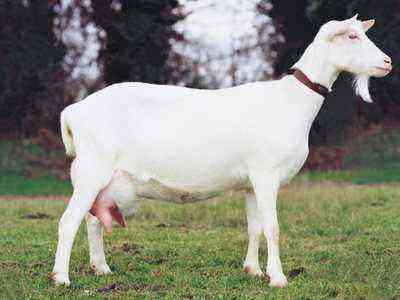Goats are animals that have good immunity, they rarely get sick, and require less attention when kept than cows. Udder diseases in goats appear after lambing, therefore, when deciding to have this animal or engage in active breeding, you should know what diseases can be, how to distinguish a sick animal and how to choose a healthy individual.
farmer-online.com
Diseases of the udder in goats
The content of the article:
Signs of goat disease
In order for goat breeding to bring maximum profit, attention should be paid to the health of animals. The behavior of a healthy goat is always active. The animal eats with pleasure, has even breathing. The pulse is easily felt, and normal body temperature is considered to be 39-40 degrees.
Symptoms that should be alarming come down to the following list:
- rapid uneven breathing, shortness of breath;
- fever and high heart rate;
- cooling of the limbs and ears;
- poor appetite;
- lack of milk.
When buying a goat, you should ask the seller a number of questions: how old is the animal, how many times was lambing, how easy is it to milk, when was the last lambing, how much milk did the goat give after each lambing, does it have its own goat, how good is the appetite and how often is it fed. The answers to these questions will allow you to draw conclusions about the health of the goat and make a decision.
What are the diseases of goats
Diseases that are characteristic of goats can be contagious and non-contagious. Among the contagious can be infectious and parasitic diseases. Their treatment is mandatory, since an epidemic can destroy the entire paddock.
Diseases of the udder in goats can be inflammatory and infectious. In the first case, these are non-contagious diseases, in the second, quarantine will be required during treatment. In both cases, you can not self-medicate, and use these recommendations for informational purposes. For an accurate diagnosis of the animal, look at the photo of what this or that lesion looks like. In addition, you should consult with your veterinarian. He will be able to prescribe the correct treatment regimen, which will prevent the spread of the disease to other goats and quickly improve the well-being of the sick individual.
Inflammation of the goat’s udder (mastitis)
Inflammatory processes occur mainly after the birth of kids. However, this is not the root cause. In the wild, goats feel great after lambing, which means that the root of the problem should be sought in the conditions of detention. Unfavorable conditions are often created in barns that cause inflammation of the udder:
- drafts;
- Failure to comply with sanitary conditions;
- Non-compliance with the rules of milking;
- High humidity and low floor temperature.
Mastitis is characterized by hardening of the udder in the animal and brings her severe pain. There are 4 types of this disease, depending on the causes of its occurrence:
- Catarrhal.
- Interstitial.
- Streptococcal.
- Gangrenous.
Let’s consider each type in more detail.
catarrhal mastitis
The disease is a complication of the inflammatory process, which passes from the skin of the nipples through the channel into the body. It often occurs with improper milking, when there is a tear in the mucous membrane of the teat canal. If the hygiene of keeping goats is not observed, the infection penetrates the blood vessels and causes an inflammatory process.
The clinical picture for catarrhal mastitis is as follows:
- a change in the quality of milk, it becomes watery and, when settling, decomposes into whey and curd flakes. It appears mucus and purulent sediment;
- depressed state of the goat, decreased appetite and milk yield;
- on palpation, seals are felt (fluctuating nodes);
- change in cream consistency;
- supra-mental lymph nodes in the udder area are enlarged.
If you notice these signs, contact your doctor immediately!
The prognosis for the treatment of catarrhal mastitis in goats, subject to all recommendations, is favorable. The veterinarian prescribes complex therapy, which includes improving the conditions of detention, drug treatment, and physiotherapy.
Drug treatment includes antibiotics, sulfonamides and topical ointments. Antibiotics are administered intramuscularly, the course is no more than 5 days. The drug is prescribed by a veterinarian.
Sulfanilamide preparations are given orally in dry form 2-3 times a day for 4-5 days. Also, we treat the udder with a mixture of camphor and bleached oils and anti-inflammatory gels, which improve the condition of the skin and heal the affected areas. Be sure to use trauma.
Interstitial or serous mastitis
This type of mastitis occurs when infections are introduced into the circulatory system due to diseases of the uterus, intestinal colic, and when hygiene of the nipples is not observed. The inflammatory process from the cracked skin of the udder and nipples moves along the lymphatic pathways and spreads to the interlobular connective tissue of the udder. In some cases, after the appearance of kids, balls appear in the udder of a goat, the process spreads and causes general clinical signs:
- Temperature increase;
- Weakness and lethargy;
- Deterioration of milk quality;
- Decreased appetite;
- The udder is painful and hot on deep palpation;
- The lymph node is enlarged;
- Abscesses between milk lobules and at the base of the udder.
If you examine in detail the udder with serous mastitis in a goat, you can notice reddening of the skin, thickening, peeling and characteristic seals. In severe forms of goat udder disease, lameness and abduction of the limbs to the sides are manifested.
In mild cases, this sore can be safely eliminated, but their treatment requires a systematic approach. First of all, eliminate the causes that caused mastitis, provide care for the animal. It is advisable to move the goat to a stall. Dietary nutrition is important in order to exclude bloating of the scar and intestinal colic, they can aggravate the condition of the animal and add to its suffering.
Streptococcal mastitis
Streptococcal mastitis is presented as an infectious form of the disease, and the causative agents are streptococci that enter the udder through the teat canals. It is spread by sharing with sick cows and using common hygiene items. Also, an epidemic among the livestock of goats and cows is possible if hand hygiene is not observed in milkmaids.
Symptoms of streptococcal mastitis are expressed as follows:
- Redness, swelling, acne and soreness of the udder in the acute period (the first 1-2 days);
- Reducing the quantity and deterioration of the quality of milk: bitter taste, thickish, with impurities of mucus and pus, may be grayish, yellow, brown;
- General lethargy and high fever.
If you delay the treatment, then after 2-5 days goat mastitis becomes chronic, in which their treatment becomes more difficult. When diagnosing this disease, cysts are found in the affected part of the udder in the form of bumps, thickenings, which were formed as a result of blockage of the ducts of the mammary gland. In severe cases, the glandular tissue of the udder is affected, milk secretion gradually or rapidly stops.
Mild forms can be cured if diagnosed correctly and treated early. Severe and chronic forms are incurable, goats that have recovered from mastitis constantly excrete streptococci, and can cause disease in other animals and people who consume their milk.
In the early days, medications are prescribed for their treatment. It is necessary to do frequent milking, udder massage.
Gangrenous mastitis
Udder gangrene usually results from the previous three types of mastitis. Signs of gangrenous lesions are as follows:
- Temperature 41-42 degrees;
- Atony of the preventricles;
- Lack of appetite;
- Lameness in the hind limbs;
- The udder is hot and sore.
For the treatment of gangrene in goats, the same measures are used as for catarrhal and serous mastitis.
Furunculosis
Another unpleasant disease is furunculosis in goats and their treatment directly depends on how quickly it is diagnosed. The first signs of this disease are similar to all other diseases. The bump does not pose a serious threat to life, however, one of the reasons is a staphylococcal infection, which can affect people who consume the milk of a sick individual.
Carefully inspect the udder to detect disease in advance
An animal after giving birth to kids, poor hygiene and an unbalanced diet can cause bumps.
Treatment of furunculosis involves improving the conditions of the animal, the use of outside solutions and glycerin ointment. Also, hygiene measures should be taken – wean milkmaids to work without gloves.
Cracks in the nipples
Cracks in the nipples can occur if the rules for keeping and caring for a goat are not followed. On farms, goats can be kept in unsanitary conditions, as a result of which the animals can get sick.
Cracks appear as a result of a lack of nutrition and when pathogenic microbes enter the bloodstream.
If you see that the skin on the nipples is thickened or there are any other defects, then before milking it is advisable to lubricate it with boric acid or petroleum jelly. After diagnosis, excluding serious diseases of the dairy goat, you can use ointments for healing, iodine and other antiseptics.
Udder injury
Quite often, frisky goats get bruised udders. It is characterized by an increase in temperature and compaction at the site of injury. It is not difficult to cure a bruise – compresses and a light massage are enough.
Many diseases are easier to prevent than to treat. Therefore, compliance with the conditions of detention, proper nutrition and regular veterinary supervision will allow your goats to live a long and happy life!
